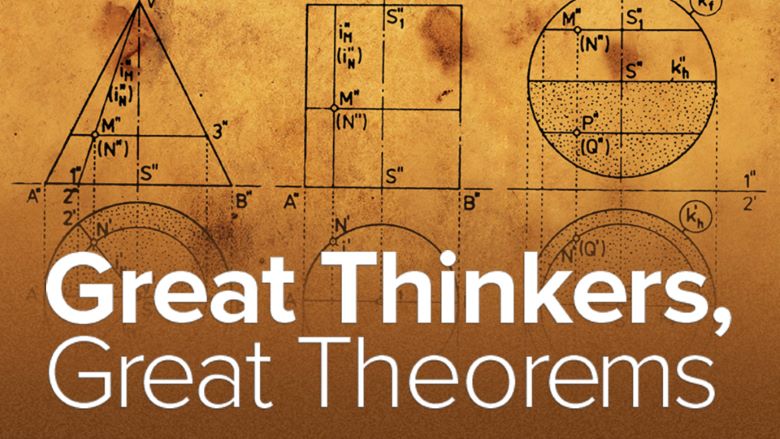در حال حاضر محصولی در سبد خرید شما وجود ندارد.

Mathematics is filled with beautiful theorems that are as breathtaking as the most celebrated works of art, literature, or music. They are the Mona Lisas, Hamlets, and Fifth Symphonys of the field—landmark achievements that repay endless study and that are the work of geniuses as fascinating as Leonardo, Shakespeare, and Beethoven. Here is a sample:
You can savor these results and many more in Great Thinkers, Great Theorems, 24 half-hour lectures that conduct you through more than 3,000 years of beautiful mathematics, telling the story of the growth of the field through a carefully chosen selection of its most awe-inspiring theorems.
Approaching great theorems the way an art course approaches great works of art, the course opens your mind to new levels of math appreciation. And it requires no more than a grasp of high school mathematics, although it will delight mathematicians of all abilities.
Your guide on this lavishly illustrated tour, which features detailed graphics walking you through every step of every proof, is Professor William Dunham of Muhlenberg College, an award-winning teacher who has developed an artist's eye for conveying the essence of a mathematical idea. Through his enthusiasm for brilliant strategies, novel tactics, and other hallmarks of great theorems, you learn how mathematicians think and what they mean by "beauty" in their work. As added enrichment, the course guidebook has supplementary questions and problems that allow you to go deeper into the ideas behind the theorems.
An Innovative Approach to Mathematics
Professor Dunham has been taking this innovative approach to mathematics for over a quarter-century—in the classroom and in his popular books. With Great Thinkers, Great Theorems you get to watch him bring this subject to life in stimulating lectures that combine history, biography, and, above all, theorems, presented as a series of intellectual adventures that have built mathematics into the powerful tool of analysis and understanding that it is today.
In the arts, a great masterpiece can transform a genre; think of Claude Monet's 1872 canvas Impression, Sunrise, which gave the name to the Impressionist movement and revolutionized painting. The same is true in mathematics, with the difference that the revolution is permanent. Once a theorem has been established, it is true forever; it never goes out of style. Therefore the great theorems of the past are as fresh and impressive today as on the day they were first proved.
What Makes a Theorem Great?
A theorem is a mathematical proposition backed by a rigorous chain of reasoning, called a proof, that shows it is indisputably true. As for greatness, Professor Dunham believes the defining qualities of a great theorem are elegance and surprise, exemplified by these cases:
Great Thinkers, Great Theorems includes many lectures that are devoted to a single theorem. In these, Professor Dunham breaks the proof into manageable pieces so that you can follow it in detail. When you get to the Q.E.D.—the initials traditionally ending a proof, signaling quod erat demonstrandum (Latin for "that which was to be demonstrated")—you can step back and take in the masterpiece as a whole, just as you would with a painting in a museum.
In other lectures, you focus on the biographies of the mathematicians behind these masterpieces—geniuses who led eventful, eccentric, and sometimes tragic lives. For example:
Describing a common reaction to the theorems produced by these great thinkers, Professor Dunham says his students often want to know where the breakthrough ideas came from: How did the mathematicians do it? The question defies analysis, he says. "It's like asking: ‘Why did Shakespeare put the balcony scene in Romeo and Juliet? What made him think of it?' Well, he was Shakespeare. This is what genius looks like!" And by watching the lectures in Great Thinkers, Great Theorems, you will see what equivalent genius looks like in mathematics.
در این روش نیاز به افزودن محصول به سبد خرید و تکمیل اطلاعات نیست و شما پس از وارد کردن ایمیل خود و طی کردن مراحل پرداخت لینک های دریافت محصولات را در ایمیل خود دریافت خواهید کرد.